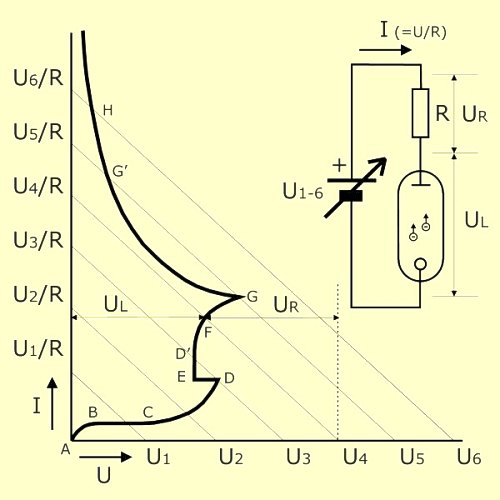FROM-DARK-TO-GLOW-DISCHARGE
An increase of the supply
voltage once a dark discharge
has been established, will
intensify the electric field. As a
consequence the free
electrons will travel towards
the anode at a higher speed,
making them to collide more
violently with the gas atoms
they meet on their path. In
point B of the voltage-current
characteristic the majority of
the collisions is still of the
elastic type but from point C
on, more and more electrons
within the atoms will get
excited. Finally some of the
involved atoms will even get
ionised, producing additional
electrons to participate in the
charge displacement towards
the anode. Once these secondary electrons are able to pick up so much energy from
the electric field that they are able to free another electron by themselves, small
avalanches of electrons eventually might occur. The number of these irregular,
individual avalanches per unit of time is proportional to the strength of the background
radiation and it is this type of discharge that is used in Geiger-Müller tubes to detect
radioactivity.
A secondary effect from the electron avalanches are clouds of ionised atoms that,
due to their net positive charge, will be attracted towards the cathode and finally will
collide with it. A part of these collisions may be so violent that they have enough
energy to free even more electrons out of the cathode. These electrons will join the
electrons already freed by the background radiation and in the avalanches and they
will travel towards the anode as well. Due to these additional electrons the number
and intensity of the individual avalanches increases and at point D in the
characteristic the number of electrons that is freed from the cathode finally turns out
to be sufficient to maintain a continuous avalanche, independent of the intensity of
the background radiation. The path between cathode and anode now becomes
conductive and the voltage over the discharge tube will steeply drop to E. The
breakdown voltage D at which the path becomes conductive is called the spark
voltage. Due to the serial resistor, the current through and the voltage over the
discharge tube will stabilise in D' and the dark discharge has now transformed into a
so-called glow discharge.


